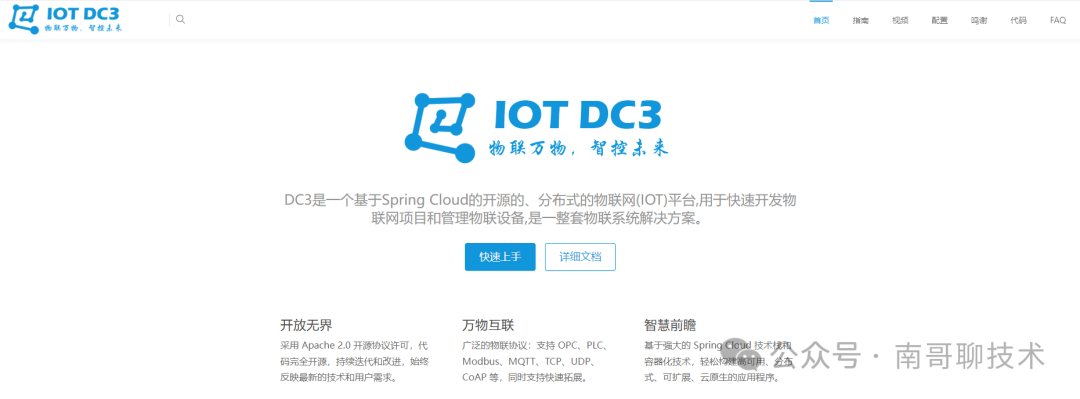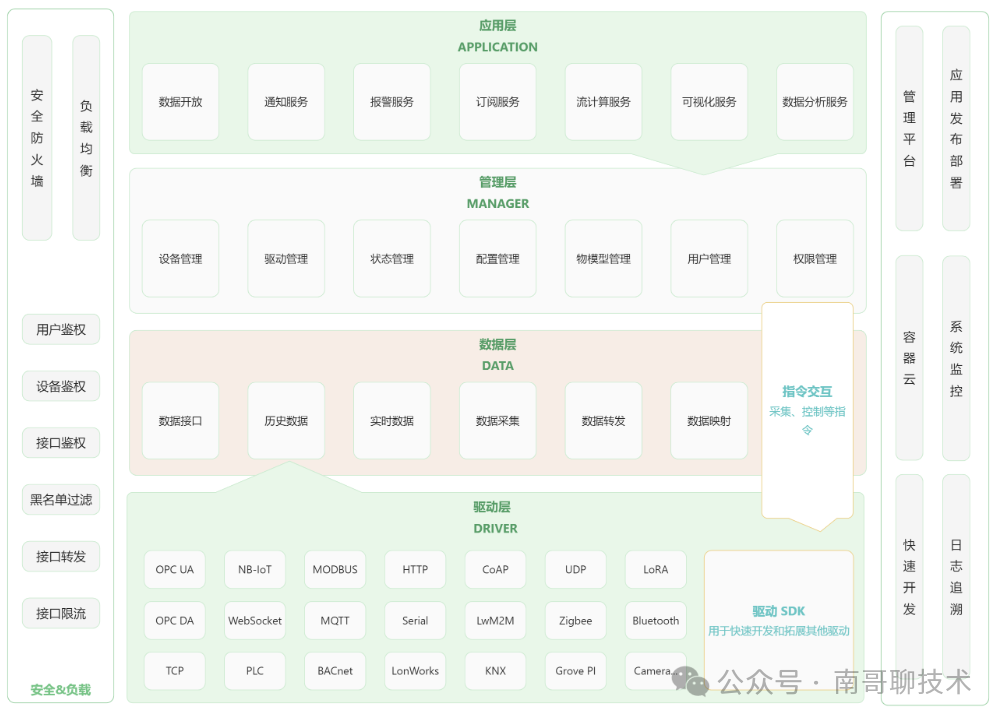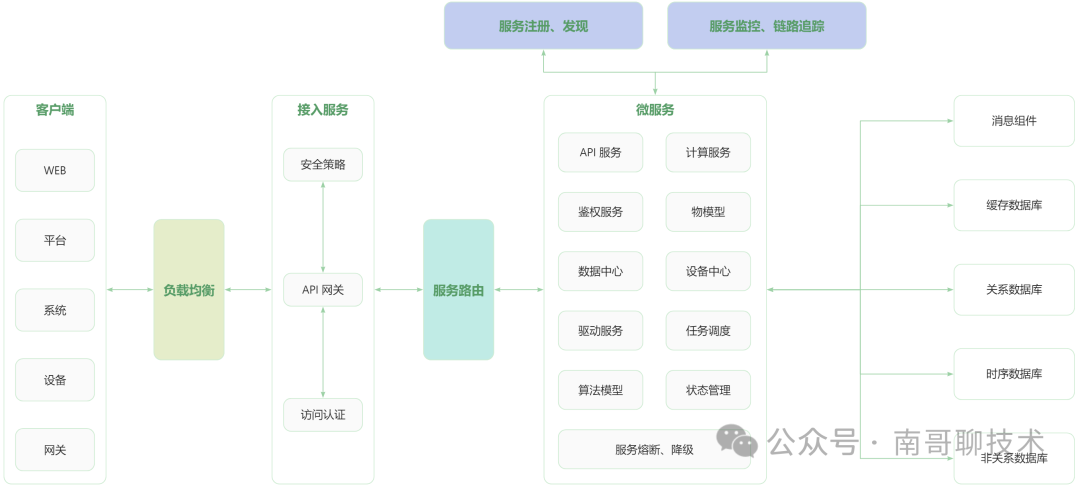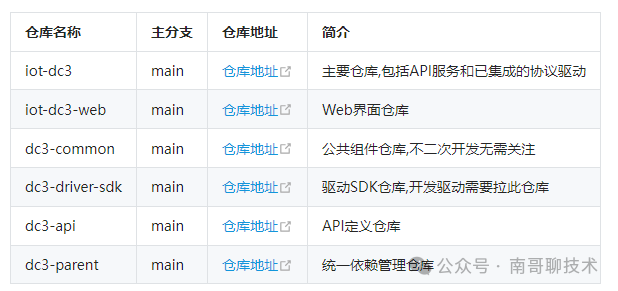In today’s rapidly developing Internet of Things (IoT) technology, the DC3 open-source IoT platform has quickly become the preferred tool for developers and enterprises due to its microservices architecture, modular design, high scalability, and fully open-source features. It supports various scenarios such as industrial automation, smart homes, and environmental monitoring, providing a complete solution from device access and data management to microservices. This article will delve into the core advantages, technical architecture, and application scenarios of DC3.
1. What is DC3?
DC3 (IoT DC3) is an open-source distributed IoT platform based on Spring Cloud designed to provide developers and enterprises with the ability to rapidly build IoT systems. Its core goal is to achieve efficient device access, real-time data processing, and flexible system expansion through modular design and microservices architecture.

Core Features
- Microservices Architecture: Built on Spring Cloud, supporting highly available and scalable distributed deployment.
- Four-Layer Architecture Design: Drive layer, data layer, management layer, application layer, with clear decoupling and independent functionality.
- Protocol Extensibility: Quickly integrate protocols like MQTT, Modbus, and HTTP through SDK.
- Multi-Tenant Support: Resource isolation based on namespaces, suitable for enterprise-level scenarios.
- Cloud-Native Compatibility: Supports Docker container deployment and Kubernetes cluster management.
- Secure and Reliable: Data encryption transmission, hierarchical permission control, and full-link monitoring.
- Fully Open Source: Follows the Apache-2.0 protocol, with completely controllable code and no copyright risks.
2. Core Functions and Architecture Analysis
2.1. Four-Layer Architecture Design
DC3 adopts a four-layer hierarchical architecture, with each layer focusing on specific functions to ensure system efficiency and flexibility:

| Level | Function and Role |
|---|---|
| Drive Layer | Provides SDK for standard or proprietary protocols, responsible for device data collection and command control (e.g., MQTT, Modbus). |
| Data Layer | Stores device data, supports databases like MySQL, MongoDB, Redis, and provides efficient data management interfaces. |
| Management Layer | Microservice registration center (e.g., Eureka), device registration, permission management, configuration center (Spring Cloud Config). |
| Application Layer | Rule engine, alarm notification, data open API, task scheduling, log management, and third-party platform integration (some features under development). |
2.2. Core Functional Modules
- Device Management: Device registration, template configuration, driver binding, status monitoring.
- Data Collection and Storage: Real-time collection of device data and persistent storage through SDK.
- Protocol Extension: Developers can customize drivers for seamless integration of new device protocols.
- Multi-Tenant Support: Enterprise-level resource isolation based on namespaces (under development).
- Security Mechanism: Data encryption transmission, hierarchical permission control.
- Cloud-Edge Collaboration: Supports deployment of edge computing nodes to reduce cloud dependency.
3. Technical Implementation and Advantages
3.1. Technology Stack
- Backend: Spring Cloud (Eureka, Gateway, Feign, Config), MySQL, MongoDB, Redis, RabbitMQ/Kafka.
- Frontend: Vue.js + Element-UI (Web console).
- Deployment: Docker containerization, supports Kubernetes cluster management.

Repository Description:

3.2. Core Advantages
| Advantage | Compared to Other Platforms |
|---|---|
| Open Source and Free | No commercial licensing costs, fully controllable code. |
| Microservices Architecture | High scalability, suitable for complex enterprise-level scenarios. |
| Rapid Development | Modular design reduces repetitive development costs. |
| Multi-Protocol Support | Flexible extension of device access capabilities through SDK. |
| Cloud-Native Compatibility | Supports Kubernetes cluster deployment, suitable for cloud environments. |
| Containerized Deployment | Docker simplifies operations, allowing for quick service startup and updates. |
4. Typical Application Scenarios
4.1. Industrial Internet of Things (IIoT)
- Device Monitoring: Real-time collection of production line equipment data for predictive maintenance and fault diagnosis.
- Data-Driven Decision Making: Analyzing equipment performance through time-series databases to optimize production processes.
4.2. Smart Homes and Buildings
- Device Interconnection: One-click control of lighting, temperature control, and security systems, supporting voice assistant integration.
- Energy Management: Using smart plugs to monitor electricity consumption and optimize household energy use.
4.3. Environmental Monitoring
- Real-Time Data Collection: Deploying sensors to monitor environmental parameters such as temperature, humidity, and PM2.5.
- Alarm Integration: Triggering email/SMS notifications when thresholds are exceeded, initiating emergency measures.
4.4. Edge Computing
- Offline Processing: Deploying edge nodes in remote areas for local processing of sensor data.
- Remote Debugging: Managing devices remotely via API to reduce operational costs.
5. Quick Start Guide
5.1. Environment Preparation
- Dependency Services: MySQL, MongoDB, Redis, RabbitMQ (or Kafka).
- Deployment Tools: Docker, Docker Compose.
5.2. Deployment Steps
# 1. Clone the code repository
git clone https://gitee.com/pnoker/iot-dc3.git
# 2. Start the basic services (Docker Compose)
cd iot-dc3/dc3
docker-compose -f docker-compose-dev.yml up -d mysql mongo redis rabbitmq
# 3. Deploy microservices (start in order)
# AuthApplication (authentication center), ManagerApplication (management service), DataApplication (data service), GatewayApplication (API gateway).
# 4. Build Web UI
cd iot-dc3-web
yarn install
yarn serve
# Access http://localhost:8080, default username and password are in the documentation.
5.3. Simulating Device Access (Using MQTT as an Example)
- Start the MQTT driver service: Run the
<span>dc3-driver-mqtt</span>module in the IDE. - Add Device Template: Configure the template in the Web UI, defining sensor positions (e.g., temperature, humidity).
- Register Device: Bind the MQTT driver, set QoS and Topic.
- Simulate Data Sending: Use the MQTTX client to send JSON data and view real-time data.
6. Community and Ecosystem Support
6.1. Open Source Contributions
- Submit PR: Create a new branch based on the
<span>main</span>branch (format:<span>feature/your_name/description</span>), and submit to the<span>develop</span>branch. - Community Participation: Get technical support through Gitee/GitHub discussion forums, QQ group (Group number: 940575749).
6.2. Enterprise Cases
DC3 has served multiple enterprises, including:
- Deqi Pharmaceutical: Medical device data collection and monitoring.
- Rongwan Technology: Smart city environmental monitoring system.
- Deshu Technology: Predictive maintenance of industrial equipment.
6.3. Documentation and Resources
- Experience Now: Visit the DC3 official website, or clone the code repository to quickly set up the system.
- Official Documentation: DC3 Wiki
- Code Repository: Gitee | GitHub
7. Conclusion: Unlocking Infinite Possibilities in IoT
DC3 is not just an IoT platform; it is an open and extensible ecosystem. With its core based on the Spring Cloud microservices architecture, combined with containerized deployment and modular design, it has become an efficient tool for enterprises’ digital transformation. Whether for the complex demands of industrial IoT or the rapid prototyping of smart homes, DC3 can provide reliable technical support.
ENDFeel free to like, share, and forward to encourage me~👇👇Follow me👇👇Read more great articles and receive learning materials
Reply “AI Introduction” to receive 7 e-books on AI introduction;
Reply “AI Learning” to receive 17 must-read e-books on AI;
Recommended Reading:1. Huawei’s Ternary Revolution: A “Computing Power Nuclear Explosion” that Changes the Future of AI!2. A 35-Year-Old Programmer’s Test: Using Vanna to Rewrite Ruo Yi’s Permission SQL, Reducing 3 Days of Work to 10 Minutes3. Costing Less than 100, Intelligence Surpassing Siri! Open Source ESP32 Xiao Zhi AI Redefines AI Assistants4. AI Equity Movement: How Xiao Zhi’s Open Source Server Can Reduce Costs for SMEs by 50%?5. A Comprehensive Analysis of the Technical Implementation Principles Behind Manus